Thermal Analysis of a New Neutron Shielding Vacuum Multiple Glass
Abstract
:1. Introduction
2. Materials and Methods
2.1. The Structure of the Gd-Containing Laminate Vacuum Multiple Glass
- The problem of neutron shielding: the Gd-containing organic glass contains the Gd element, which can shield the neutron glass;
- The problem of heat insulation: the vacuum layer is used to increase the heat resistance, and reduce the heat exchange between the low- and high-temperature sides;
- The problem of high temperature resistance: compared with the neutron organic glass, the common glass has high temperature resistance (the top temperature is about 1580 °C), which is set at the high temperature side.
2.2. Mathematical Modelling Approach
2.2.1. Convective Heat Transfer Process
2.2.2. Conductive Heat Transfer Process
2.2.3. Radiative Heat Transfer Process
2.3. Finite Element Model
2.4. Model Validation
2.5. Boundary Conditions and Distribution of Neutron Energy Loads
3. Results and Discussion
3.1. Effect of the Work Temperature on the Temperature Distribution of Vacuum Multiple Glass
3.2. Effect of the Sealing Agent Width on the Temperature Distribution of Vacuum Multiple Glass
3.3. Effect of the View Size on the Temperature Distribution of Vacuum Multiple Glass
3.4. Effect of the Vacuum Thermal Conductivity on the Temperature Distribution of Vacuum Multiple Glass
3.5. Overall Discussions
4. Conclusions
- The vacuum layer between common glasses can make the work temperature of neutron shielding glass increase. The multiple glass has good heat-shielding performance and it is expected to work in a high-temperature environment;
- The vacuum layer between the common glasses and the sealing agent width decay with respect to the view size and vacuum thermal conductivity show an increase in the working temperature of the neutron shielding glass;
- The order of affecting the temperature of the organic glass is as follows: view size > vacuum thermal conductivity > sealing agent width. The sealing agent width and vacuum thermal conductivity are limited by the manufacturing conditions. The view size is the best method to improve the work temperature.
Author Contributions
Funding
Acknowledgments
Conflicts of Interest
References
- Zhang, X.; Efthimiou, G.; Wang, Y.; Huang, M. Comparisons between a new point kernel-based scheme and the infinite plane source assumption method for radiation calculation of deposited airborne radionuclides from nuclear power plants. J. Environ. Radioact. 2018, 184, 32–45. [Google Scholar] [CrossRef] [PubMed]
- Zhang, S.; Song, Y.; Wang, Z.; Ji, X.; Daly, E.; Kalish, M.; Lu, S.; Du, S.; Liu, X.; Feng, C.; et al. Design of Tokamak ELM Coil Support in High Nuclear Heat Environment. Plasma Sci. Technol. 2014, 16, 300–304. [Google Scholar] [CrossRef]
- Vukolov, K. Radiation effects in window materials for ITER diagnostics. Fusion Eng. Des. 2009, 84, 1961–1963. [Google Scholar] [CrossRef]
- Vukolov, K.; Levin, B. Results of irradiation tests of KU-1 and KS-4V silica glasses as ITER candidate window materials. Fusion Eng. Des. 2003, 66, 861–864. [Google Scholar] [CrossRef]
- Aşkın, A. Gamma and neutron shielding characterizations of the Ag2O–V2O5–MoO3–TeO2 quaternary tellurite glass system with the Geant4 simulation toolkit and Phy-X software. Ceram. Int. 2020, 46, 6046–6051. [Google Scholar] [CrossRef]
- Tekin, H.O.; Kavaz, E.; Altunsoy, E.; Kilicoglu, O.; Agar, O.; Erguzel, T.; Sayyed, M. An extensive investigation on gamma-ray and neutron attenuation parameters of cobalt oxide and nickel oxide substituted bioactive glasses. Ceram. Int. 2019, 45, 9934–9949. [Google Scholar] [CrossRef]
- Kirdsiri, K.; Kaewkhao, J.; Chanthima, N.; Limsuwan, P. Comparative study of silicate glasses containing Bi2O3, PbO and BaO: Radiation shielding and optical properties. Ann. Nucl. Energy 2011, 38, 1438–1441. [Google Scholar] [CrossRef]
- Kaewkhao, J.; Pokaipisit, A.; Limsuwan, P. Study on borate glass system containing with Bi2O3 and BaO for gamma-rays shielding materials: Comparison with PbO. J. Nucl. Mater. 2010, 399, 38–40. [Google Scholar] [CrossRef]
- Sayyed, M.; Qashou, S.I.; Khattari, Z. Radiation shielding competence of newly developed TeO2-WO3 glasses. J. Alloy. Compd. 2017, 696, 632–638. [Google Scholar] [CrossRef]
- El-Moneim, A.A.; El-Mallawany, R. Analysis and prediction for elastic properties of quaternary tellurite Ag2O–V2O5–MoO3–TeO2 and WO3–B2O3–MgO–TeO2 glasses. J. Non-Crystalline Solids 2019, 522, 119580. [Google Scholar] [CrossRef]
- Marple, M.A.; Jesuit, M.; Hung, I.; Gan, Z.; Feller, S.; Sen, S. Structure of TeO2 glass: Results from 2D 125Te NMR spectroscopy. J. Non-Crystalline Solids 2019, 513, 183–190. [Google Scholar] [CrossRef]
- Ab Aziz, S.; El-Mallawany, R.; Hariharan, K.; Rosmawati, S. Effect of Concurrent ZnO Addition and AlF 3 Reduction on the Elastic Properties of Tellurite Based Glass System. Adv. Condens. Matter Phys. 2014, 2014, 1–7. [Google Scholar]
- Sidek, H.A.A.; Rosmawati, S.; Halimah, M.K.; Matori, K.A.; Talib, Z.A. Effect of AlF3 on the Density and Elastic Properties of Zinc Tellurite Glass Systems. Materials 2012, 5, 1361–1372. [Google Scholar] [CrossRef] [Green Version]
- Wang, C.; Wang, C.; He, M.; Li, T.; Yan, C.; Zhang, M. Preparation and Properties of Gd3+-Containing Organic Glass. Chinese. J. Rare Met. 2010, 34, 568–573. [Google Scholar]
- Tang, X.; Chai, H.; Ni, M.; Chen, F.; Chen, D. Neutron Shielding Material with Flame Retardant and Heat Insulation Performance and Its Preparation Method. CN Patent 201510128412.8, 11 July 2017. [Google Scholar]
- Chuntonov, K.; Ivanov, A.O.; Verbitsky, B.; Setina, J. Getters for vacuum insulated glazing. Vacuum 2018, 155, 300–306. [Google Scholar] [CrossRef]
- Fang, Y.; Memon, S.; Peng, J.; Tyrer, M.; Ming, T. Solar thermal performance of two innovative configurations of air-vacuum layered triple glazed windows. Renew. Energy 2020, 150, 167–175. [Google Scholar] [CrossRef]
- Katsura, T.; Memon, S.; Radwan, A.; Nakamura, M.; Nagano, K. Thermal performance analysis of a new structured-core translucent vacuum insulation panel in comparison to vacuum glazing: Experimental and theoretically validated analyses. Sol. Energy 2020, 199, 326–346. [Google Scholar] [CrossRef]
- Memon, S.; Fang, Y.; Eames, P.C. The influence of low-temperature surface induction on evacuation, pump-out hole sealing and thermal performance of composite edge-sealed vacuum insulated glazing. Renew. Energy 2019, 135, 450–464. [Google Scholar] [CrossRef]
- Zhang, S.; Song, Y.; Wang, Z.; Lu, S.; Ji, X.; Du, S.; Liu, X.; Feng, C.; Yang, H.; Wang, S.; et al. Rapid Thermal-Hydraulic Analysis and Design Optimization of ITER Upper ELM Coils. Plasma Sci. Technol. 2014, 16, 978–983. [Google Scholar] [CrossRef]
- Zhang, S.; Song, Y.; Wang, Z.; Du, S.; Ji, X.; Liu, X.; Feng, C.; Yang, H.; Wang, S.; Daly, E.; et al. Structural analysis and optimization for ITER upper ELM coil. Fusion Eng. Des. 2014, 89, 1–5. [Google Scholar] [CrossRef]
- Zhang, W.; Wu, Z.; Liu, Y.-W.; Dong, J.; Yan, X.-W.; Hou, X. Thermal Analysis of Organic Light Emitting Diodes Based on Basic Heat Transfer Theory. Chin. Phys. Lett. 2015, 32, 087201. [Google Scholar] [CrossRef]
- Memon, S.; Farukh, F.; Kandan, K. Effect of Cavity Vacuum Pressure Diminution on Thermal Performance of Triple Vacuum Glazing. Appl. Sci. 2018, 8, 1705. [Google Scholar] [CrossRef] [Green Version]
- Memon, S.; Farukh, F.; Eames, P.C.; Silberschmidt, V.V. A new low-temperature hermetic composite edge seal for the fabrication of triple vacuum glazing. Vacuum 2015, 120, 73–82. [Google Scholar] [CrossRef] [Green Version]

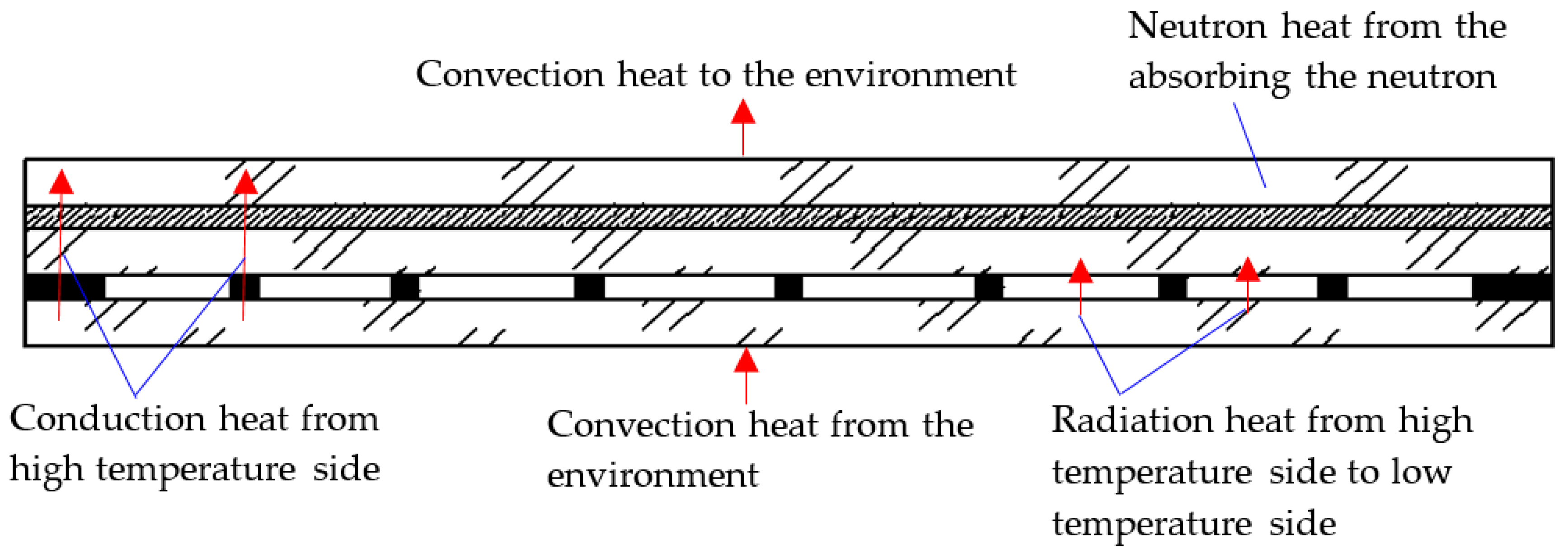


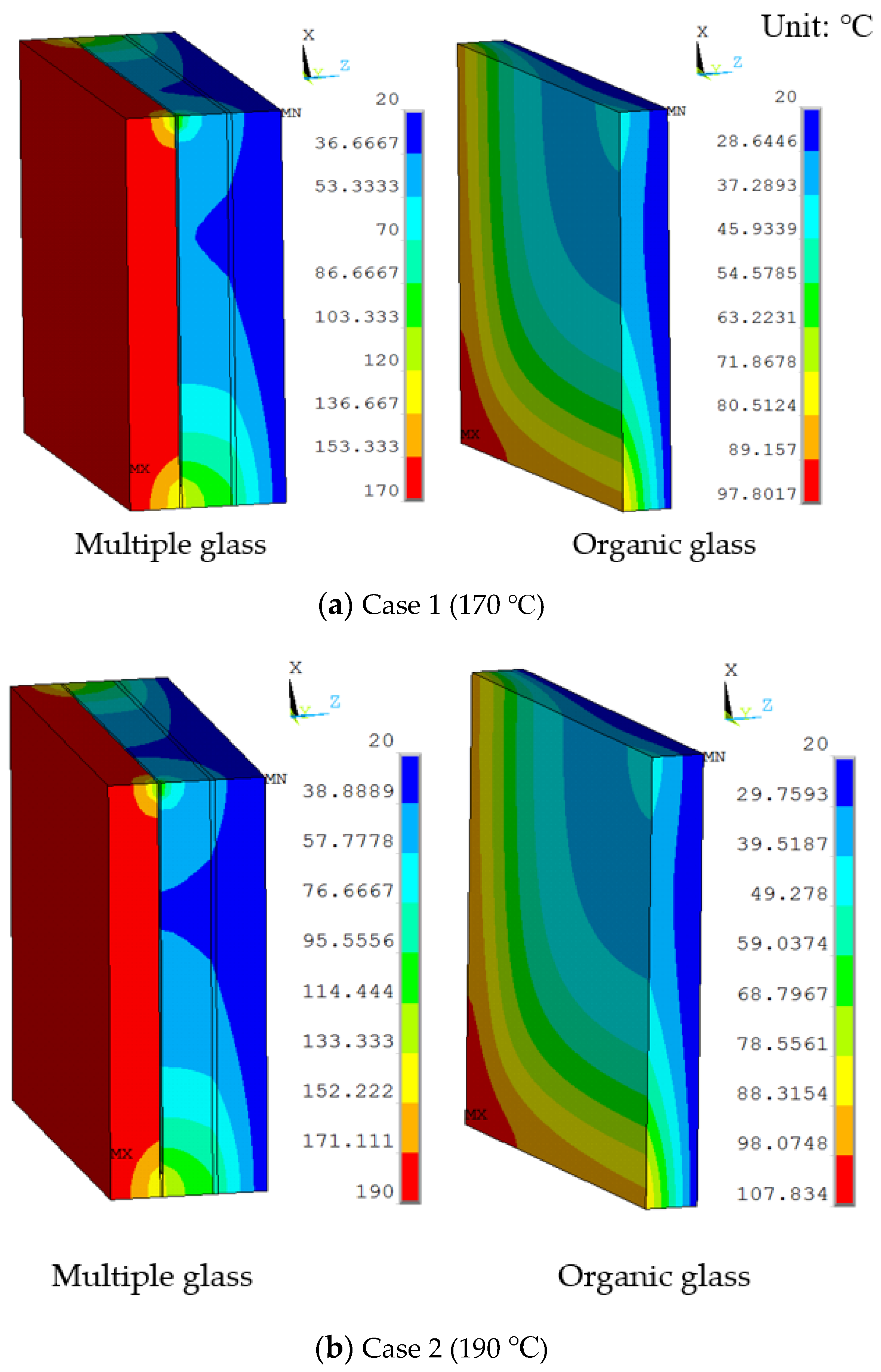
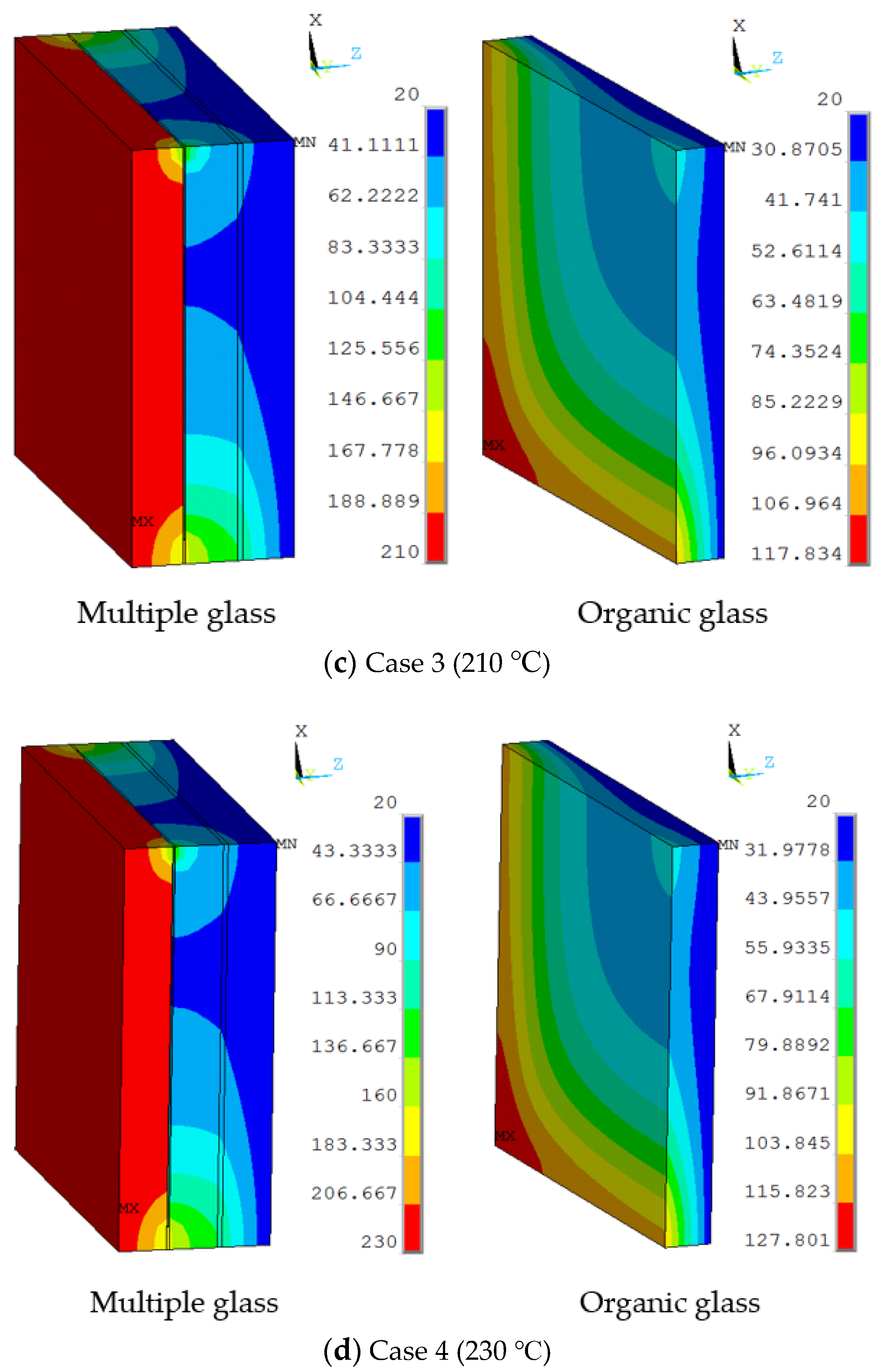
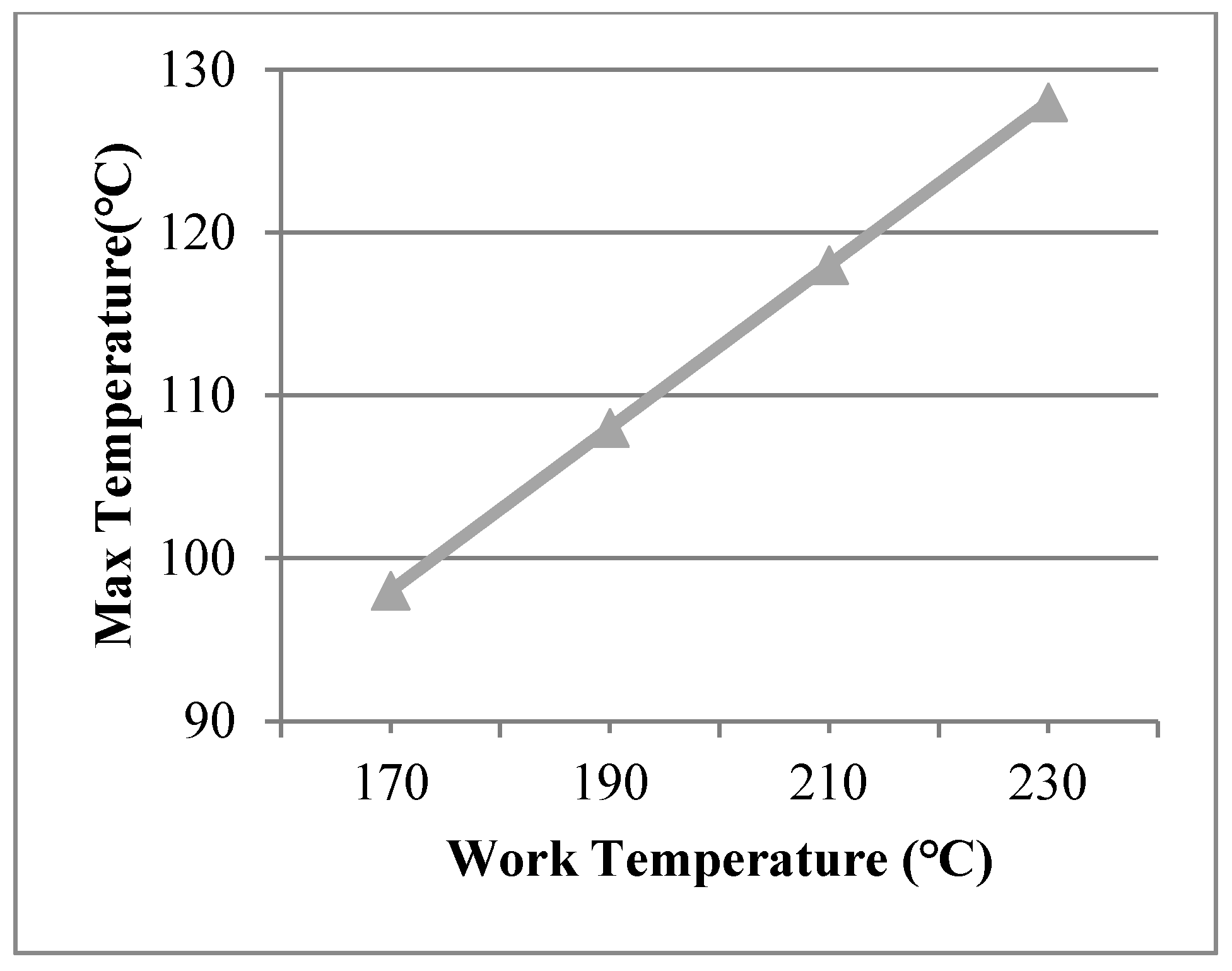

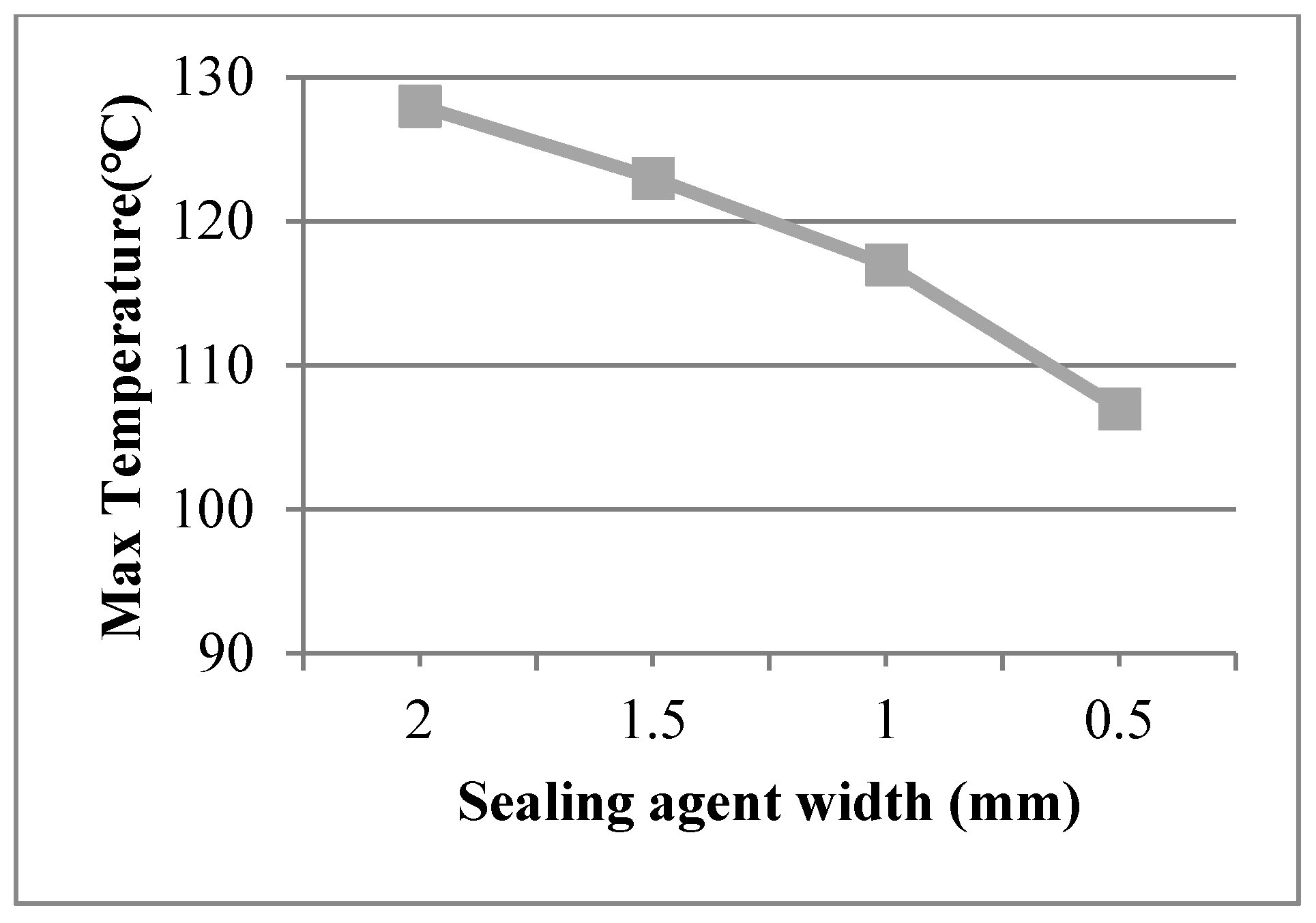
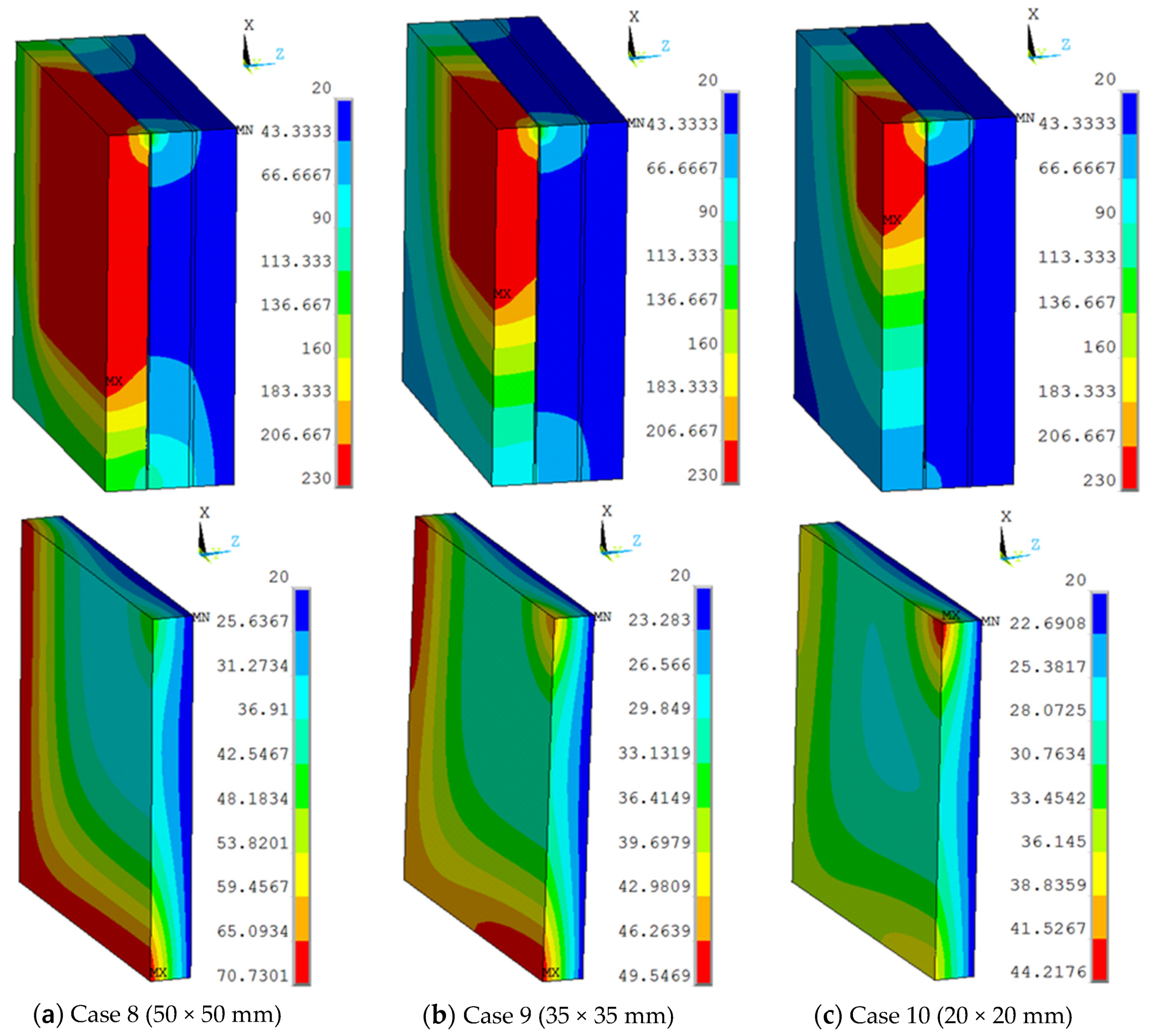
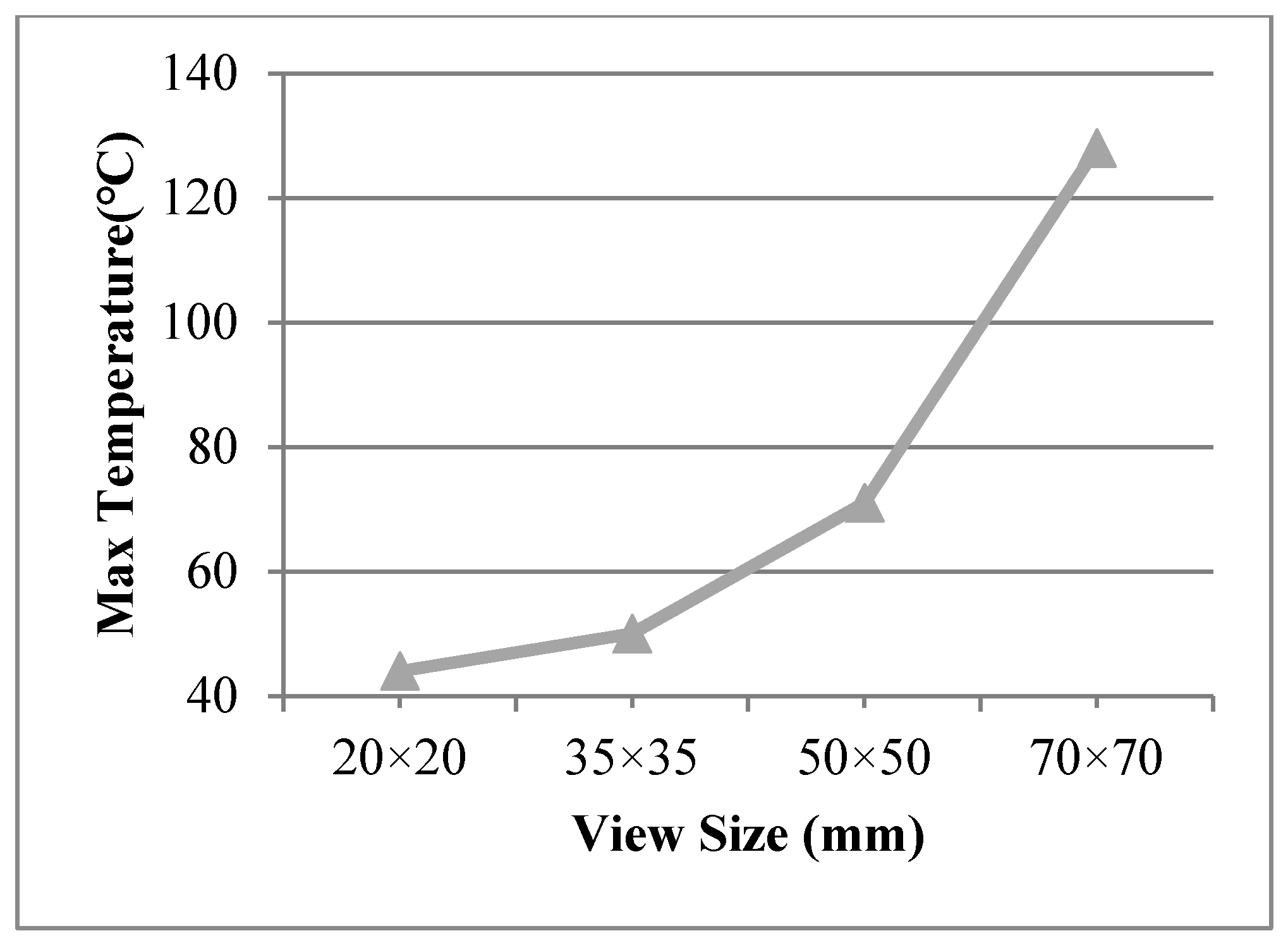
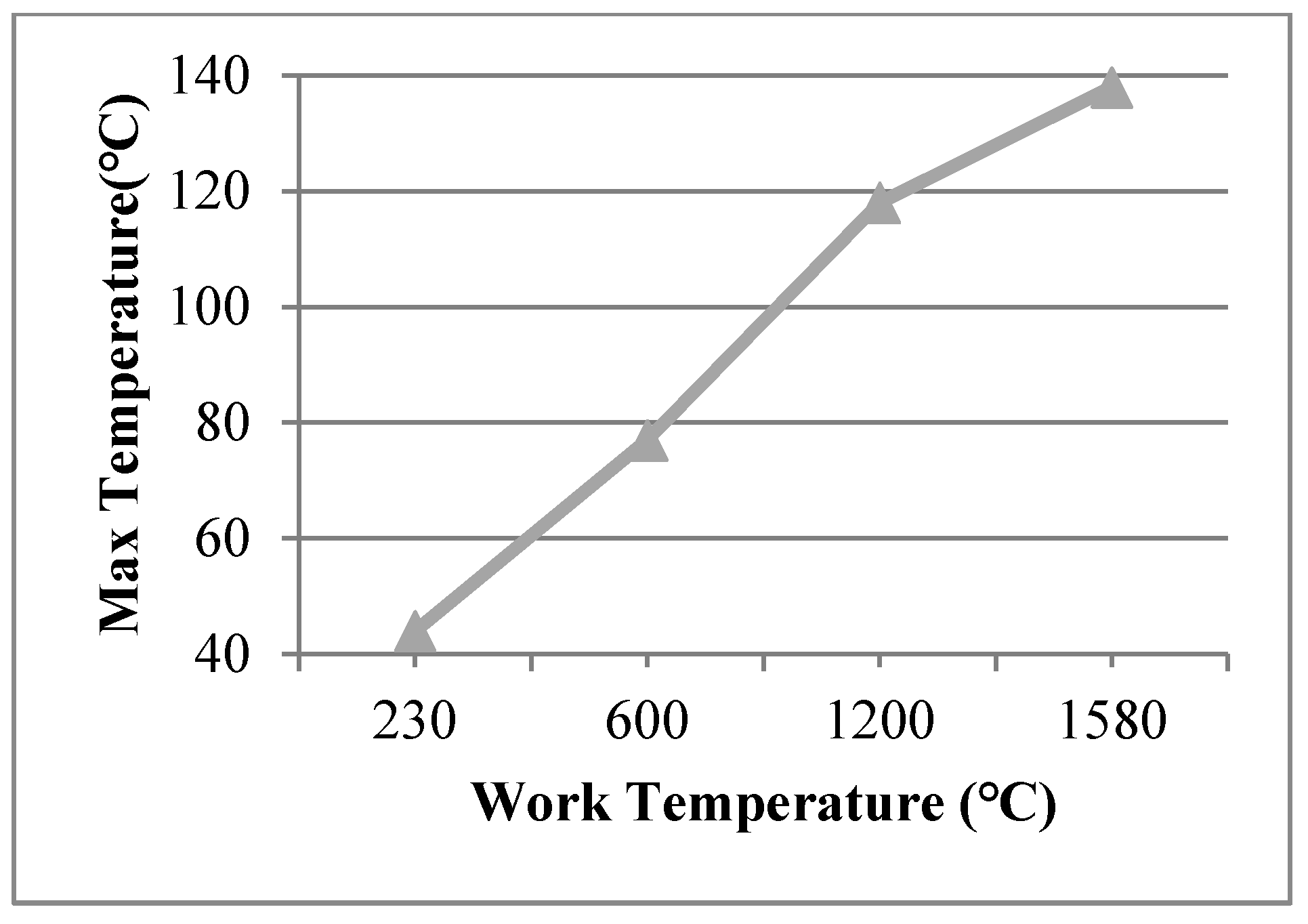
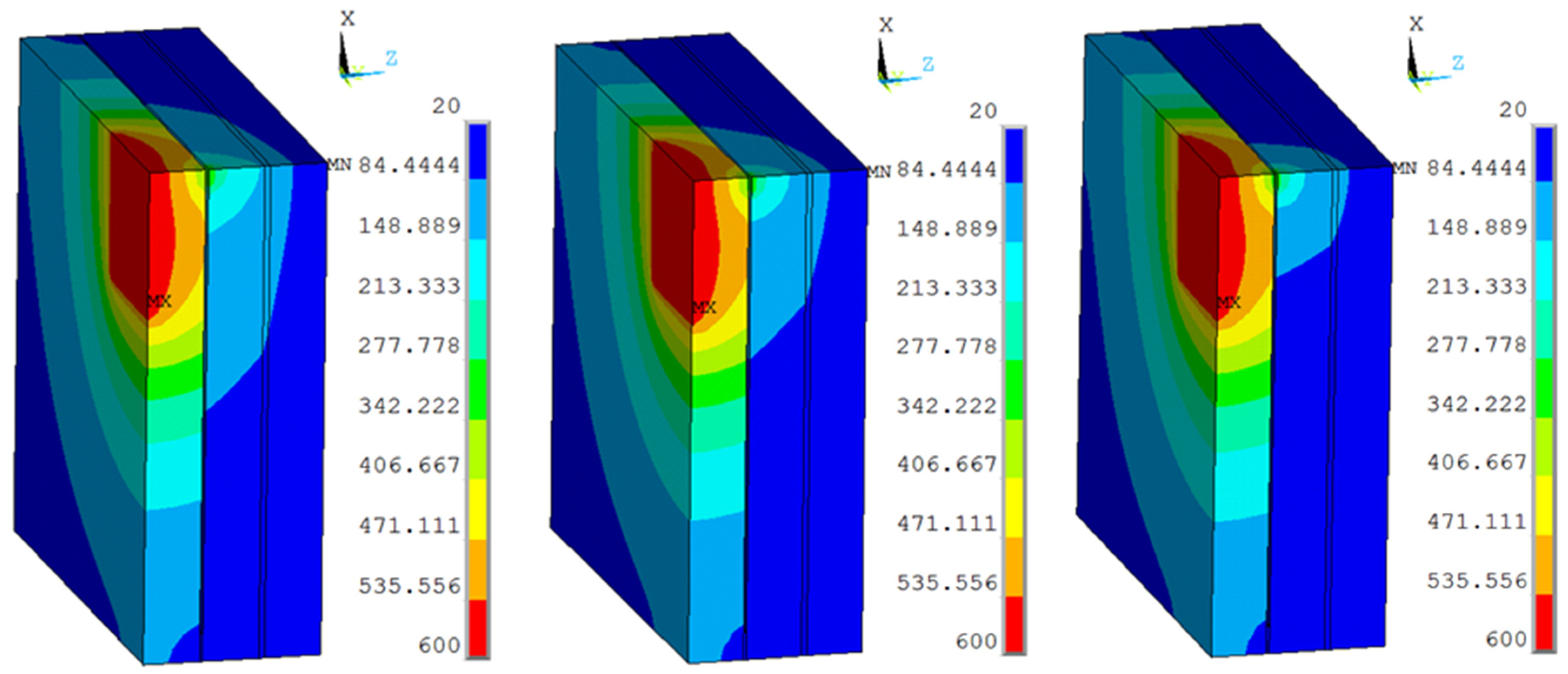

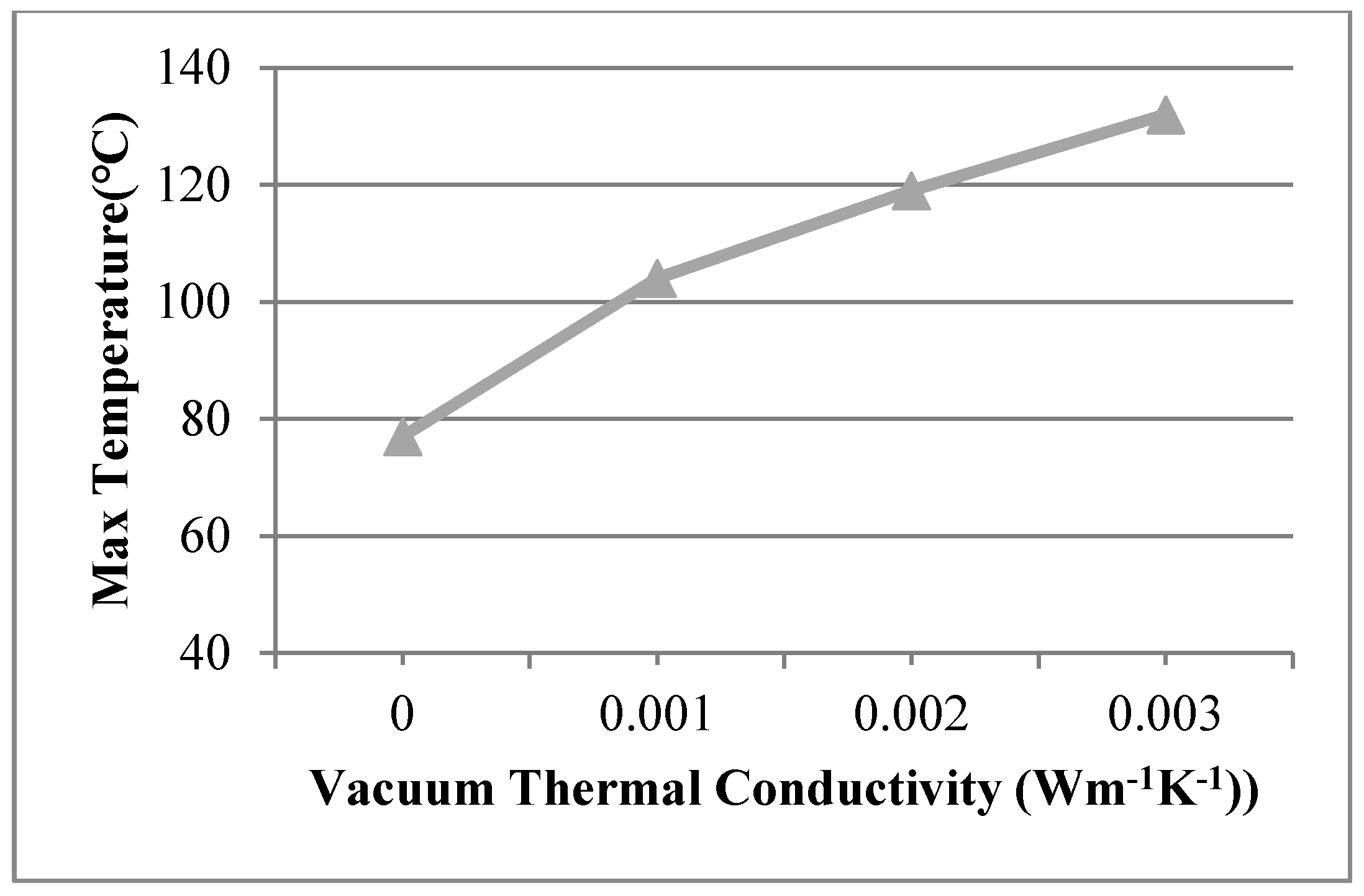
| Material | Thermal Conductivity (Wm−1 K−1) |
|---|---|
| Common glass | 0.75 |
| Sealing agent | 35 |
| Support | 18 |
| Adhesive | 0.221 |
| Organic glass | 0.2 |
| Case | Sealing Agent Width (mm) | View Size (mm2) | Vacuum Thermal Conductivity (Wm−1 K−1) | Work Temperature (°C) | Maximum Temperature of the Organic Glass (°C) |
|---|---|---|---|---|---|
| 1 | 2.0 | 70 × 70 | 0 | 170 | 98 |
| 2 | 2.0 | 70 × 70 | 0 | 190 | 108 |
| 3 | 2.0 | 70 × 70 | 0 | 210 | 118 |
| 4 | 2.0 | 70 × 70 | 0 | 230 | 128 |
| 5 | 1.5 | 70 × 70 | 0 | 230 | 123 |
| 6 | 1.0 | 70 × 70 | 0 | 230 | 117 |
| 7 | 0.5 | 70 × 70 | 0 | 230 | 107 |
| 8 | 2.0 | 50 × 50 | 0 | 230 | 71 |
| 9 | 2.0 | 35 × 35 | 0 | 230 | 50 |
| 10 | 2.0 | 20 × 20 | 0 | 230 | 44 |
| 11 | 2.0 | 20 × 20 | 0 | 600 | 77 |
| 12 | 2.0 | 20 × 20 | 0 | 1200 | 118 |
| 13 | 2.0 | 20 × 20 | 0 | 1580 | 138 |
| 14 | 2.0 | 20 × 20 | 0.003 | 600 | 132 |
| 15 | 2.0 | 20 × 20 | 0.002 | 600 | 119 |
| 16 | 2.0 | 20 × 20 | 0.001 | 600 | 104 |
© 2020 by the authors. Licensee MDPI, Basel, Switzerland. This article is an open access article distributed under the terms and conditions of the Creative Commons Attribution (CC BY) license (http://creativecommons.org/licenses/by/4.0/).
Share and Cite
Zhang, S.; Kong, M.; Memon, S.; Miao, H.; Zhang, Y.; Liu, S. Thermal Analysis of a New Neutron Shielding Vacuum Multiple Glass. Sustainability 2020, 12, 3083. https://doi.org/10.3390/su12083083
Zhang S, Kong M, Memon S, Miao H, Zhang Y, Liu S. Thermal Analysis of a New Neutron Shielding Vacuum Multiple Glass. Sustainability. 2020; 12(8):3083. https://doi.org/10.3390/su12083083
Chicago/Turabian StyleZhang, Shanwen, Min Kong, Saim Memon, Hong Miao, Yanjun Zhang, and Sixing Liu. 2020. "Thermal Analysis of a New Neutron Shielding Vacuum Multiple Glass" Sustainability 12, no. 8: 3083. https://doi.org/10.3390/su12083083






